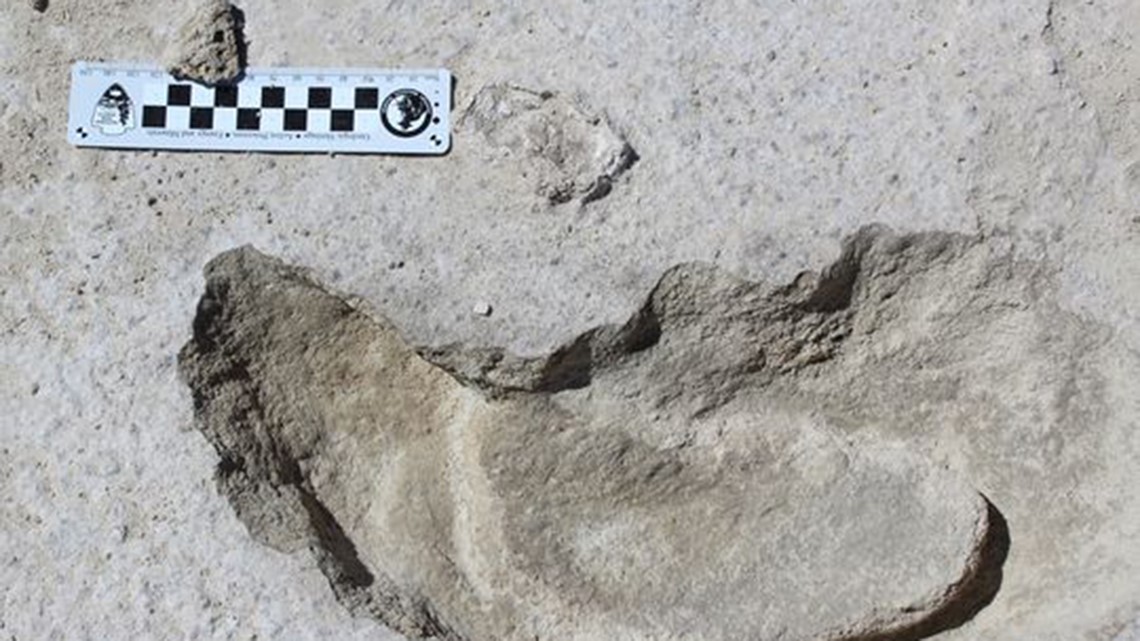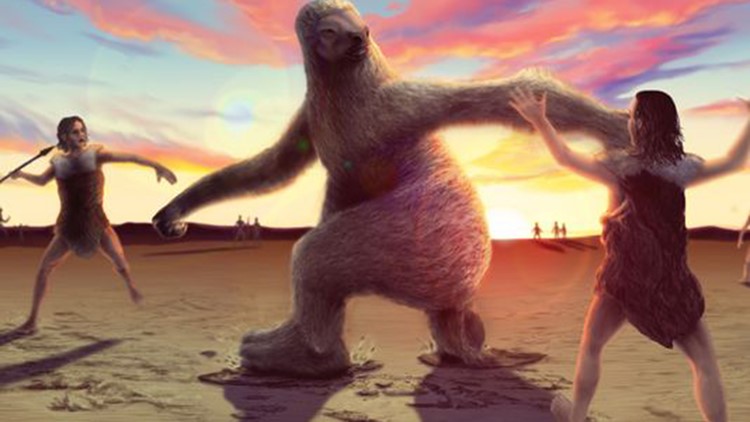Although it sounds like a grade-B science fiction movie, fossils show that our ancestors once hunted and fought giant ground sloths.
For the first time, scientists have uncovered fossilized footprints of ancient humans at the White Sands National Monument in New Mexico, a new study reports. And at the same site, those newly discovered human footprints were actually inside footprints of giant ground sloths — tall, fearsome creatures with sharp claws.
Scientists say this is evidence that the humans followed closely behind, or even “stalked” the sloths during the hunt.
"The White Sands trackway — a series of tracks and footprints — shows that someone followed a sloth, purposely stepping in their tracks as they did so," said study lead author David Bustos, the park naturalist who discovered the trackway 10 years ago.
Study co-author Matthew Bennett of Bournemouth University in the United Kingdom said "it's a big discovery to have humans there."


Now extinct, the giant sloth would have been a fierce foe for our ancestors, with its tight muscles and front legs tipped with wolverine-like claws. A single sloth could tear apart any human hunter if approached directly.
"A giant ground sloth is a big animal," said Bennett. "It's seven or eight feet tall when reared up on its hind legs."
Though it was a herbivore, hunting a giant sloth would have been a risky proposition, he added: "Going head-to-head with a giant sloth, chances are you might come off badly."


So sneak attacks with several hunters would likely have been the best course of action.
The sloth tracks also show evidence of evasion and defensive behavior near the human tracks, the study said.
"The thing that is special about these prints and sets them apart from any other fossil trackways in the world is that this discovery records the interaction between humans and Ice age giant megafauna," Bustos said. "White Sands National Monument has the largest concentration of human and Ice-age giant megafauna prints in the Americas.”
The study results may also help shed light on any role humans may have had in the extinction of giant ground sloths.
This confrontation of hunters and hunted took place more than 11,700 years ago, the study said. The Ice Age ended about 11,700 years ago and the fossil record of ground sloths indicates they were extinct by this time.


"At the end of the ice age, many of these animals became extinct," Bennett said. "Were human hunters the cause of this extinction? The footprints at White Sands help us answer this question, by showing how ancient hunters stalked and attacked these fearsome animals."
The study was published Wednesday in the peer-reviewed journal Science Advances.



